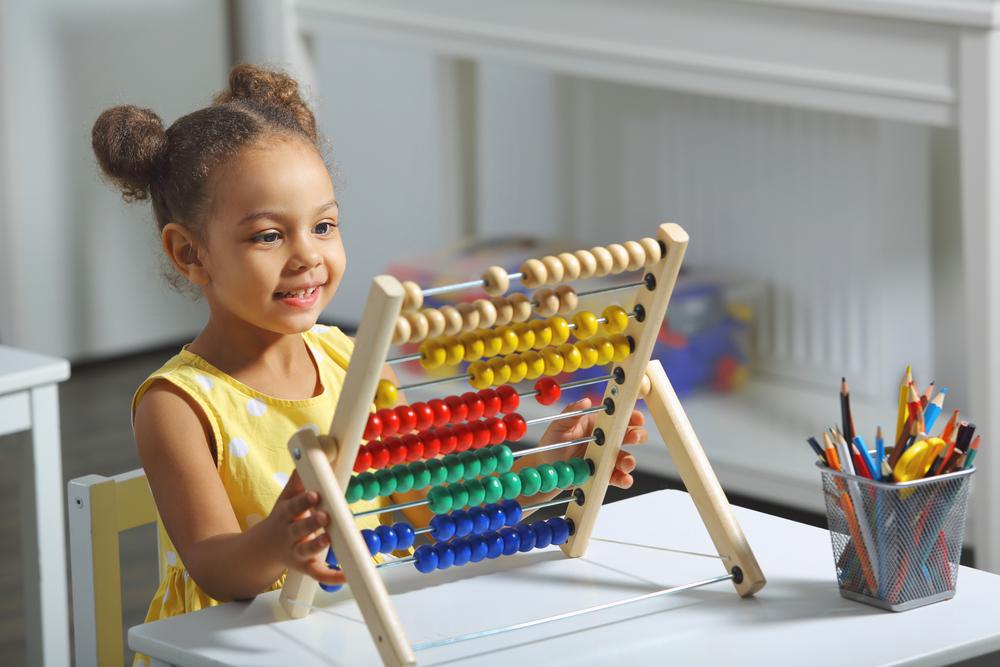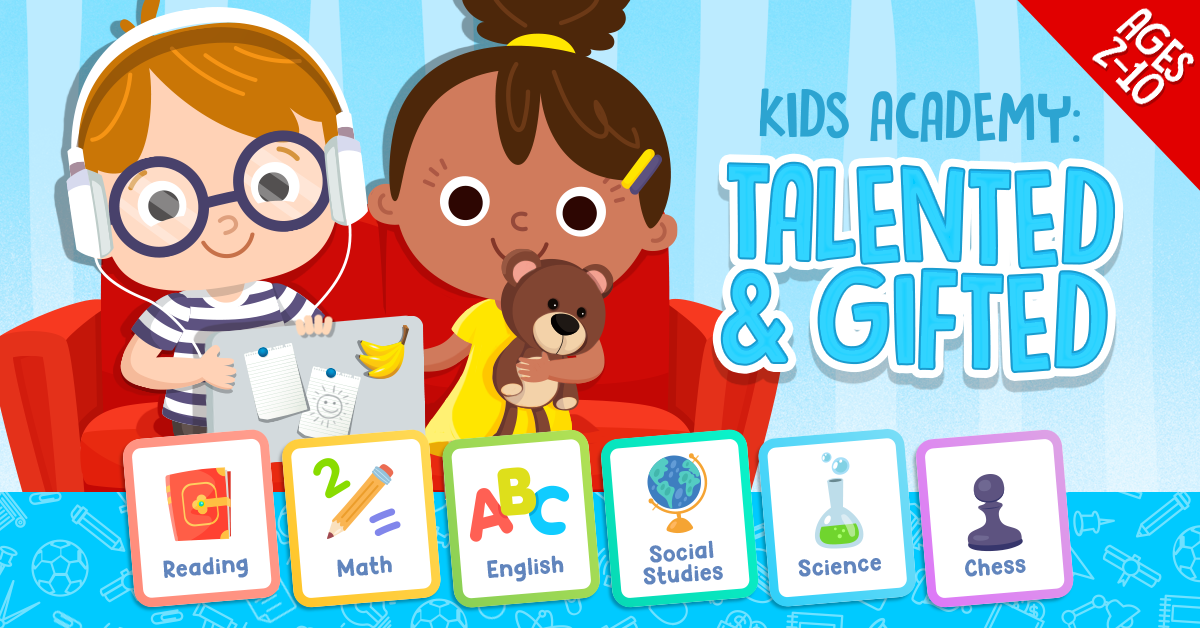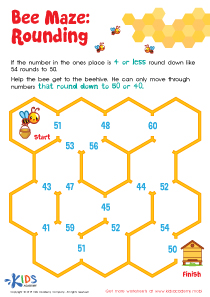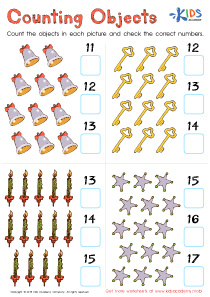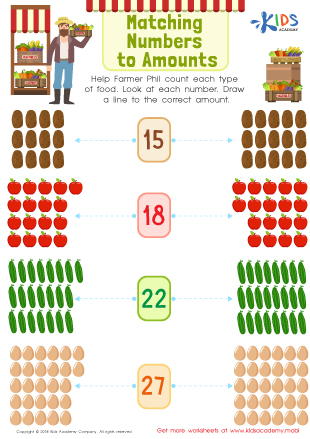Handwriting practice Normal Tracing Numbers Worksheets for Ages 4-6
5 filtered results
-
From - To
Enhance your child's handwriting skills with our "Handwriting Practice Normal Tracing Numbers Worksheets" designed for children aged 4-6. These engaging worksheets provide a fun way for young learners to practice tracing numbers, improving their fine motor skills and number recognition. With clear, easy-to-follow instructions, children can develop their handwriting technique while enjoying the process. Perfect for parents and educators alike, these worksheets will foster confidence and create a solid foundation in numeracy. Encourage your child’s early math learning and handwriting precision through our colorful and interactive number tracing activities—ideal for home or classroom use!
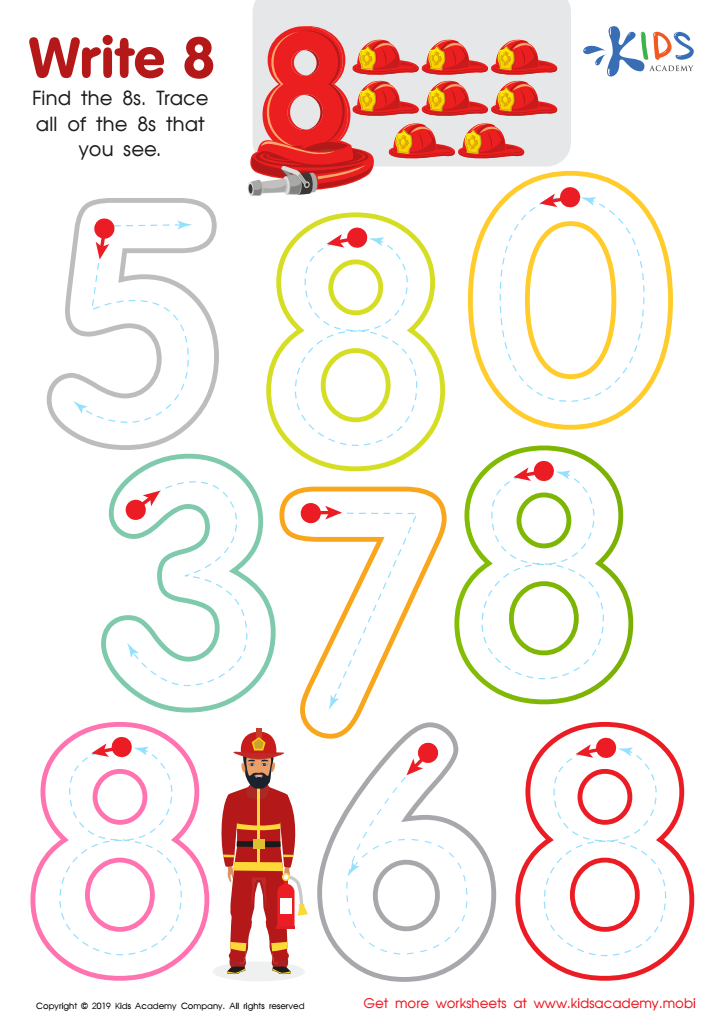

Write 8 Worksheet
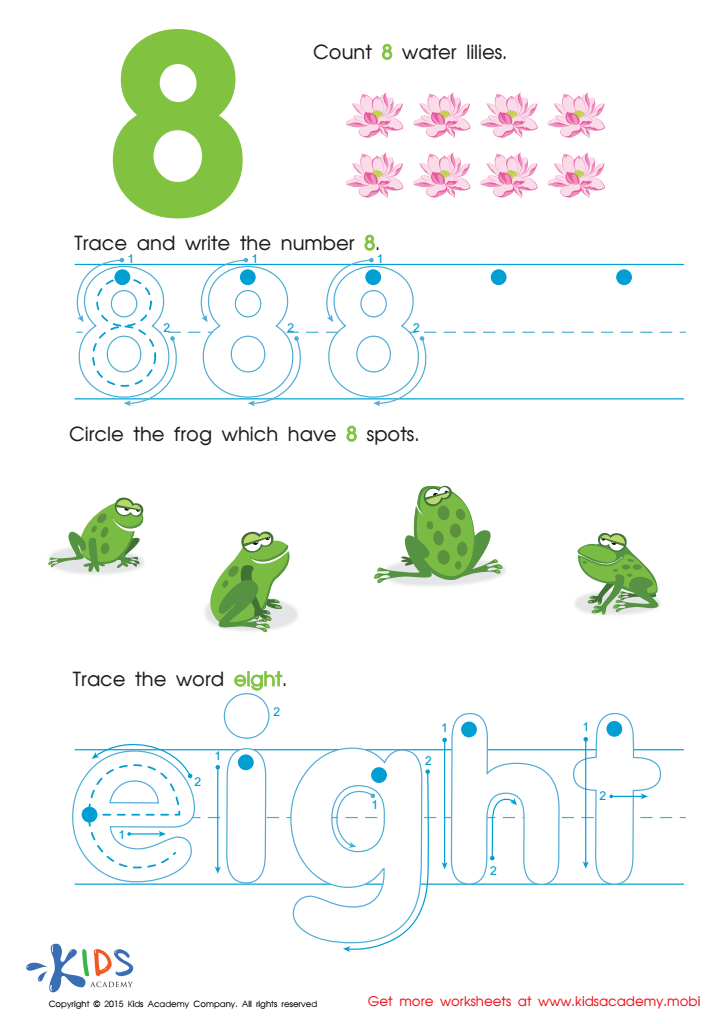

Learn Number 8 Easily Worksheet
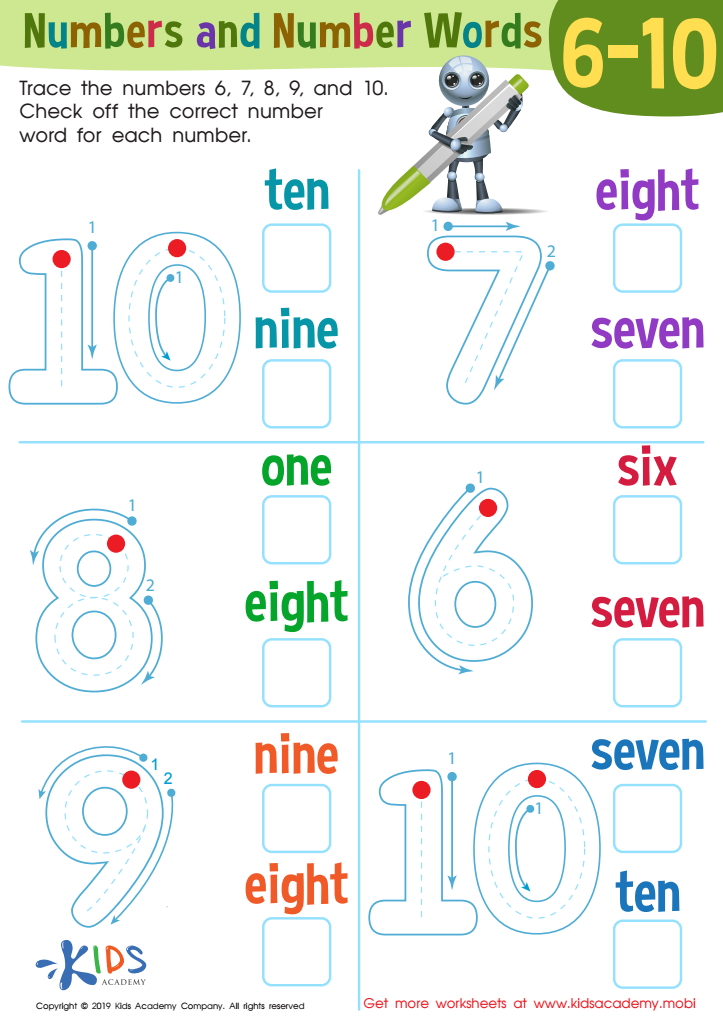

Numbers and Number Words 6–1 Worksheet
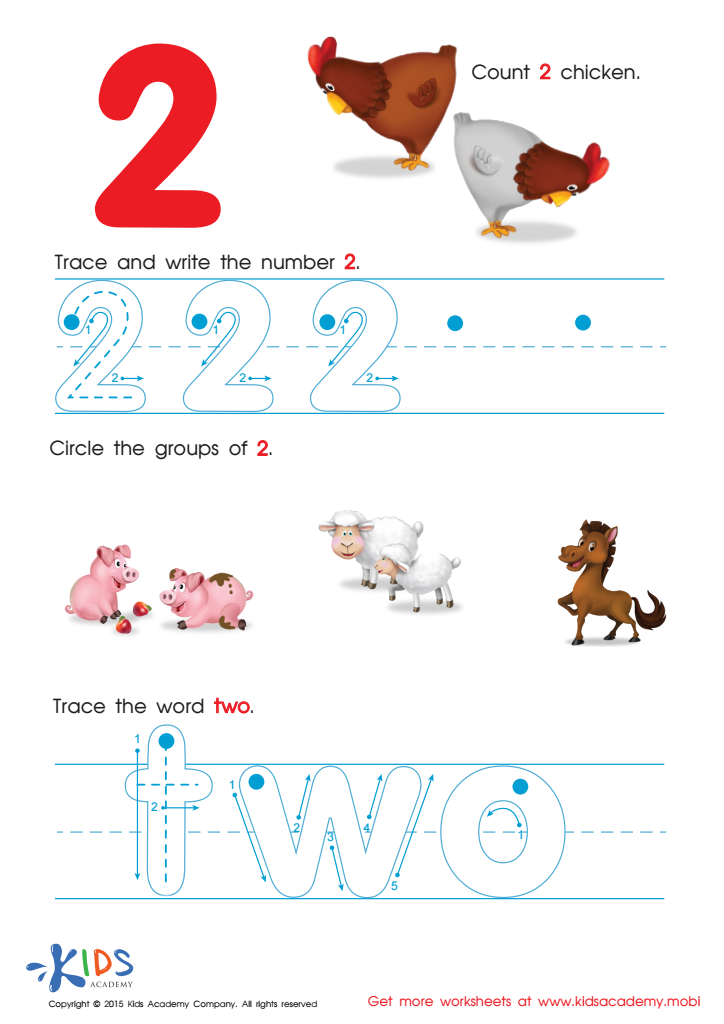

Learn to Write the Number 2 Worksheet
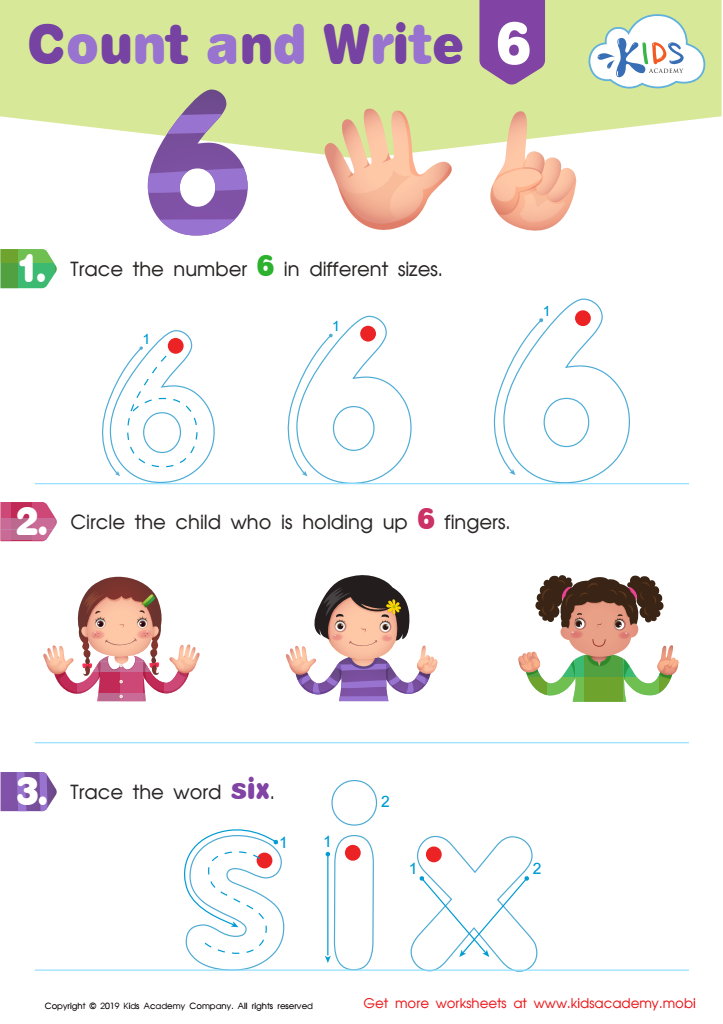

Count and Write 6 Worksheet
Handwriting practice, particularly tracing numbers, is crucial for children aged 4-6 for several reasons. At this developmental stage, children's fine motor skills are still evolving, and tracing helps them improve these essential skills. When children trace numbers, they practice hand-eye coordination, which is foundational for all writing tasks. This coordination builds the muscle memory needed for forming letters and numbers accurately.
Furthermore, learning to write numbers correctly fosters cognitive development; it aids in number recognition and mathematical understanding. As children trace, they become familiar with numeral shapes and the sequence of strokes needed, enhancing their ability to recall and reproduce these numbers independently.
Handwriting is also linked to self-expression. When children master tracing numbers, they gain confidence in their ability to communicate and create, influencing their overall attitude towards learning. Consistent practice helps reduce frustration and anxiety associated with writing, paving the way for a more positive educational experience.
Additionally, parental and teacher involvement in tracing activities can create rich, engaging learning moments that strengthen relationships, boost motivation, and celebrate children's progress. This collaborative approach ultimately nurtures a love for learning, setting a strong foundation for future academic success.
 Assign to My Students
Assign to My Students






